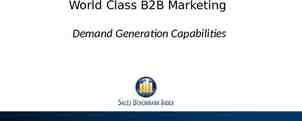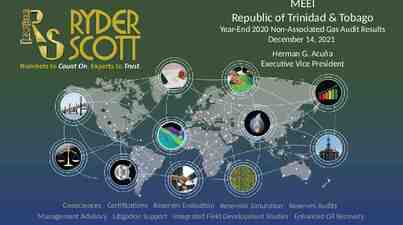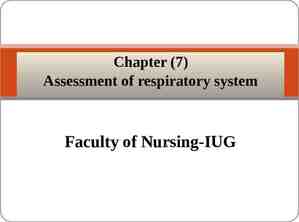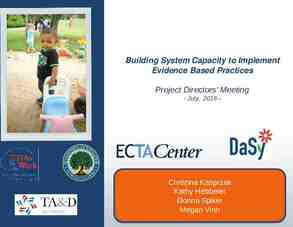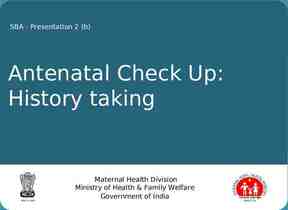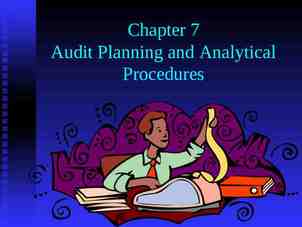FAMILY HEALTH NURSING PROCESS
31 Slides140.30 KB

FAMILY HEALTH NURSING PROCESS

DEFINITION Family health nursing process is a systematic approach to help family to develop and strengthen its capacity to meet its health needs and solve health problems.

STEPS -assessment phase -planning phase -implementation phase -evaluation phase

I. Assessment phase (family identification) The standards of determining family health status can be -optimum health of individual member -family life style -family environment -family structure, characteristics compare families health with these standards

Steps of assessment phase -plan for data collection -data collection methods and techniques -analysis of data -family profile and diagnosis

1) plan for data collection It includes data regarding -family structure and characteristics -life style, culture and socio economic factors -health and medical history and health behavior -environmental factors

Primary source of data collectionobtained directly from the client (family members) Secondary source of data collectionobtained through friends, neighbours, colleagues, family records, family team members, investigation reports, reference books etc.

2) Data collection methods and techniques -Observation -questioning -conversation and discussion -listening -review of family health records -examination -investigation -interview

Guidelines for data collection -be systematic -do not force to get information -explain the reason for data collection -ensure confidentiality -be polite -don't let the family feel small and embarrassed -make them comfortable -sympathizes and listen attentively and meaningfully -record the data

3) analysis of data It should be categorized as health deficit, health threats and foreseeable crisis situations Health deficits-failure in health maintenance and development. -diagnosed illness -deviation in growth and development -personality disorders

Health threats condition which predispose to disease, accident, poor or retarded growth and development and personality disorders

The possible health threats are -large family size -lack of education -immature parents -broken family -poor environmental condition -poor sanitation -environmental pollution -incomplete immunization -unbalanced diet

Foreseeable crisis situations-anticipated periods of unusual demands on the individual or the family in terms of adjustment . They are -marriage -pregnancy -new born -developmental stages -new job -death -change in residence

Health threats and foreseeable crisis situation are potential problems and health deficits are actual problems

4) Family profile and diagnosis Family profile implies brief description of family structure and characteristics, family life cycle and culture, socio economic conditions environmental factors health and medical history etc. Family health diagnosis is the written statement of family health problems which are assessed from analysis of data collected.

II. PLANNING PHASE (FAMILY HEALTH AND NURSING CARE PLAN FORMULATION) -it is based on the diagnosis steps of planning phase -analysis of diagnosed health problems and assessment of families ability to resolve problems (second assessment) -establish priorities -setting goals and objectives -formulating family health and nursing care plan

1) Analysis of diagnosed health problems and assessment of families ability to resolve problems (second assessment) Families ability to resolve health problems can be assessed on the basis of -ability to recognize the presence of health problems -ability to make decisions for taking appropriate health action -ability to provide desired care to the sick disabled -ability to maintain environment conducive to health promotion maintenance and personnel development - Ability to utilize community for health care

2)Establish priorities -means rank ordering of the health problems Criteria for setting priorities a)Type of problem- health deficit, health threats and foreseeable crisis situations b)Severity of the consequence of the problemnature and magnitude of the problem

c)Modifiability of the problem- possibility of resolving the problem through nursing interventions within available resources d)salience-families perception about the seriousness of the problem e)Preventive potential-whether the problem can be prevented, eradicated or controlled.

3) setting goals and objectives Client focused goal-provide need based care to malnourished children Nurse focused goal- after the nursing intervention the mother will be able to provide need based care to malnourished children

Factors influence the goal formulation -interpersonal relationship -families perception of the problem -families felt need -families perception about seriousness of the problem -families ability to face the reality

Selecting appropriate nursing intervention supplemental-direct nursing care services by the CHN to the sick developmental-CHN prepare some family members to give similar care in her absence facilitative-CHN improve families physical facilities either by modifying the exiting facilities or by developing new facilities

CHN has to consider the available resource while planning intervention. They are Family resourses-physical intellectual capabilities, physical facilities, finance etc. Community resourses-health programmes, community organization etc. Nurses resourses-her competency, time, support etc.

4) Family health nursing care plan -data analyzed- health problem prioritized- goals and objectives established- nursing interventions decided . All these components put together for the schematic representation of the care plan

It should be, -realistic -consistent with the goals -agreeable to the family -need active involvement of the family members -in written form

III. ACTION PHASE (FAMILY HEALTH AND NURSING CARE PLAN IMPLEMENTATION STEPS -review of plan and mobilization of resources -implementation and documentation CHN required to -give adequate informations

-help family to understand the situation -relate families exiting socio economic condition to health problem -motivate family to implement actions -utilize the equipments and supplies -help family to utilize the community resources

IV. EVALUATION PHASE (FAMILY HEALTH AND NURSING CARE EVALUATION) QUANTITATIVE AND QUALITATIVE QUANTITATIVE EVALUATION It determine the extent of services rendered to the family . It accounts the number of visits , clinic visits, no. of immunization completed, reduction in mortality and morbidity

QUALITATIVE EVALUATION-has 3 dimensions Structure evaluation-it measure the adequacy of resources in terms of manpower, material, time etc. Process evaluation-it measure the adequacy of nurses actions and activities implementing the nursing process Outcome evaluation- it measure the end result of the care given to the client

Tools of data collection -direct observation -questing -record review


